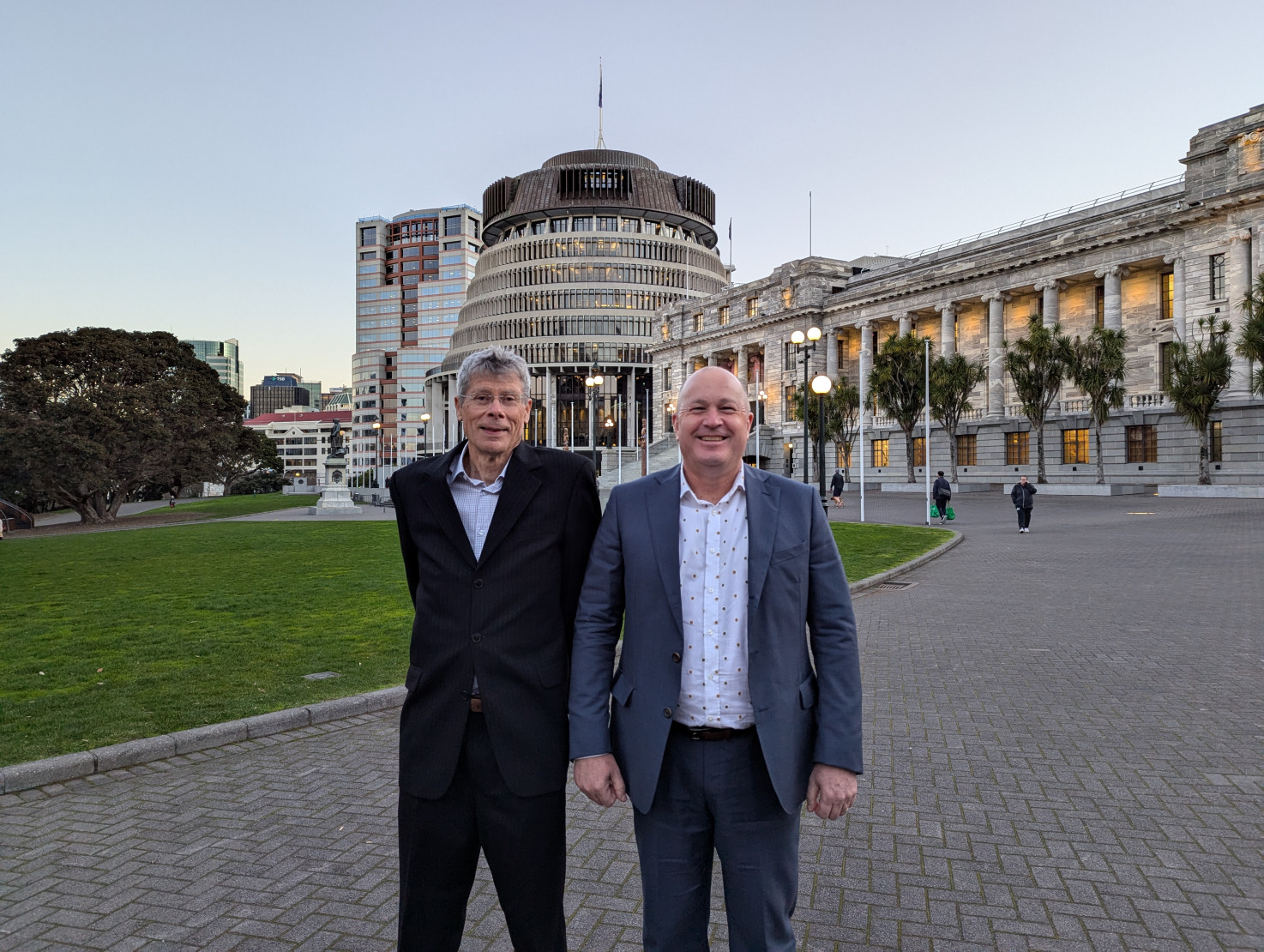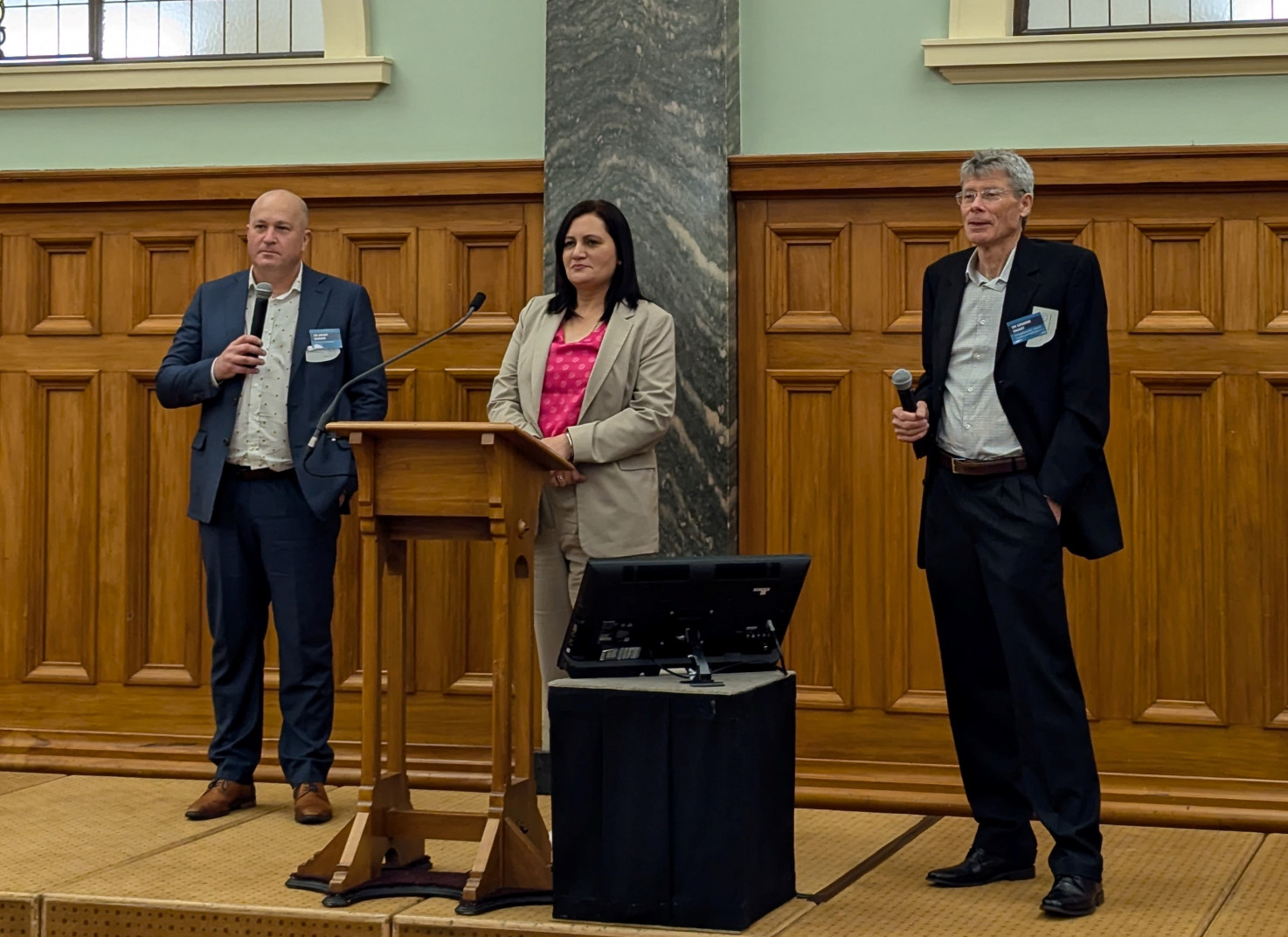Disaster-proofing NZ: Extreme weather resilience and forests for carbon capture
The fifth event in our Speaker's Science Forum series for 2024 was held on 24 Hōngongoi July at Parliament. Dr Graeme Smart described the devastation that can be caused by flooding events in our changing climate and how we, as a country, need to be better prepared. Dr Adam Barker spoke about the potential of carbon forestry to curb climate change in Aotearoa New Zealand.

Dr Graeme Smart and Dr Adam Barker at Parliament
Extreme weather resilience: Considering science and community
Dr Graeme Smart, NIWA
Dr Graeme Smart, hydrologist and Principal Scientist for Natural Hazards and Hydrodynamics at NIWA, spoke about the devastation severe weather events can cause and how floods are getting worse with climate change.
Sobering photos and videos showed damage from recent floods in New Zealand and around the world. In an arresting aerial photo, MPs could see the path of a house that had floated 600 metres on flood waters; other photos showed commuters trapped in a subway by flood waters in Henan, China.
Human-caused climate change has led to an “inflation” in extreme rainfalls, temperatures, wind speeds and storm surges (among other factors). This means a heavy storm considered a very rare event based on historic standards will become common: floods expected every 500 years could occur every 20 years if global trends in extreme rainfalls continue.
Aotearoa New Zealand’s infrastructure is not currently prepared for extreme weather events of this severity and regularity. Dr Smart described ways we can prepare through different types of resilience (structural, technological, economic, environmental, and social resilience). These include flood defences bordering our waterways; robust weather forecasting and flood modelling; changing regulation around development (i.e. stop building houses in flood plains); changes to insurance systems; and better emergency management.
Dr Smart’s strongest message was that we must stop climate change: “the longer we delay, the more we will pay”.

Dr Adam Barker and Dr Graeme Smart with Dr Parmjeet Parmar MP answering questions in the Grand Hall
Carbon farming for 2050: Pines, people, potential, and pitfalls
Dr Adam Barker, Scarlatti Limited
Dr Adam Barker is the founder and director of Scarlatti Limited, a research firm that evaluates land use with respect to greenhouse gas reduction and environment preservation.
Dr Barker explained that for Aotearoa New Zealand to reach its carbon emission target of net zero by 2050, we need to change how we use our land. A simple way to capture and store carbon is to grow and maintain forests.
Is carbon the new cash crop? According to Scarlatti, it might make financial sense for landowners to convert much of their farmland to forests for carbon capture. A modest estimate values carbon forests at $55 per tonne, which already makes it a more economical use of land than sheep and beef farming. If the value of carbon forestry is $150 per tonne, it is comparable to many dairy farms in profitability. Dr Barker suggested that increasing horticulture at the same time could replace jobs lost from sheep, beef, and dairy farms.
It is likely that the price of carbon (i.e. value of forests) will rise over time, and Scarlatti predicts that with that incentive and pre-2024 emissions policies, Aotearoa New Zealand can sequester more carbon than we emit by 2050. Scarlatti’s modelling shows that carbon forestry cannot get us to net zero by 2050 if the recent moratorium restricting conversions of farmland to forestry continues indefinitely.
